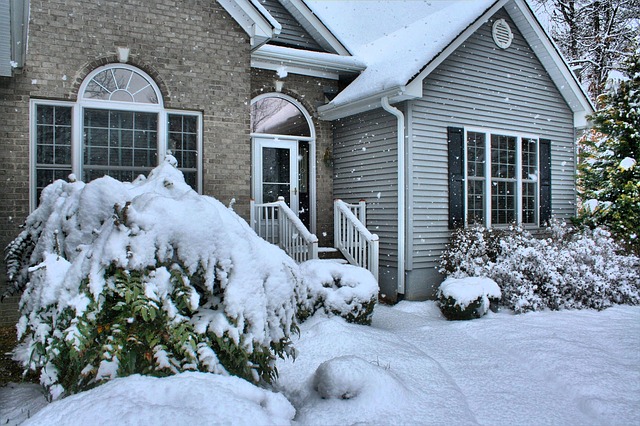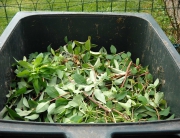October 21, 2014
20 Winter Preparation Tips for Your Home. Prepare your home, both inside and out, for the rapidly approaching winter season. Here we offer our 20 best tips:
Outdoors
- Shut off and drain outdoor faucets and pipes, to avoid freezing and bursting over the winter. Don’t forget to cover those faucets as well. The inexpensive polystyrene covers
work very well, and can be re-used for years to come.
- Clean and store patio and deck furniture for the winter. For detailed information on how to do this, check out our article: How to Clean and Store Outdoor Furniture.
- Clean out your outdoor annuals planters and pots, and bring inside any pots that are made of terra cotta or other fragile material.
- Thoroughly clean wooden decks and benches of any leaves, dirt and pine needles, to avoid mold and rot during the wet season. Now is also a good time to remove and replace any damaged wood.
- Believe it or not, now is actually a good time to re-seed any bare patches in your lawn. The seeds will benefit from the moisture that winter brings to your lawn.
- Thoroughly inspect your roof shingles and flashing for any damage. If you happen to have a damaged shingle or two, and are unable to replace them before winter, a good stop-gap measure is to make a temporary shingle out of plywood and duct tape.
- Clean out gutters, and make sure your downspouts are functioning properly. Consider adding a Downspout Extension
, if you feel that your downspout might be emptying water too close to your foundation. Downspout extensions will shuttle the water about 3-4 feet away from your house.
- Replace any worn-out outdoor light bulbs, and consider adding some lights to your walkway area if it seems dark. Don’t forget that people are often leaving the house and returning to the house in darkness during the winter time, and a dark pathway could be a safety hazard. Be proactive to keep your family and guests safe!
- Be sure to inspect for any small openings into your house from the outside, such as around vents and under the eaves, and cover them up, so that you won’t have any unwanted rodent and avian houseguests this winter!
- Stock up on winter supplies, such as shovels, snow-blowers, salt and sand, well BEFORE the first storm hits. That way you won’t be rushing to the store and fighting the crowds of people later on.
Indoors
- Inspect and replace weather stripping around doors and windows. Re-caulk windows if needed.
- Remove screen doors and windows, and replace with storm doors and windows.
- Insulate your windows with bubble-wrap! This is a nifty trick that was contributed to See Jane Drill last winter by one of our readers, Tim Olson of Lancaster, Pennsylvania. If you use his fast method, you can have your window insulated in 5 minutes or less. For full details on how it works, click HERE.
- Inspect your furnace (or have it inspected), and replace the furnace air filter to ensure that you have good indoor air quality this winter.
- Check to make sure that your smoke alarms and CO2 alarms are functioning, and replace batteries if needed.
- If you have a fireplace, have your chimney inspected, and get it swept if needed. It will cost you somewhere in the neighborhood of $150 to get your chimney swept, however, doing so is a crucial safety measure for all of us who enjoy sitting around a warm fireplace on cold winter evenings.
- If you have ceiling fans, turn them on in reverse mode after you turn on the heat. This way, the fan will push the rising warm air back down into the room, helping you to stay warmer, AND conserving energy.
- Remove any window air conditioners that are still up, or cover them.
- Do a “draft inspection” of your house. Locate any spots where you can feel the cold air coming in. Add additional weather-stripping or caulking as necessary.
- While not absolutely necessary, this is a good time to think about your indoor lighting, and how well it is working for you and your family. Simply upping the wattage of your light bulbs in areas of the house where it seems too dark could make a big difference. Or you might try softening the light in more harshly lit areas with a dimmer switch or softer bulb. In some instances, you might just want to add some lighting. A good place to start might be the kitchen, a favorite cold-weather gathering place. Here we offer 3 Steps to Updating Your Kitchen Lighting.
Made it through the list? Okay, you are officially ready for the winter season, and all the enjoyment it brings!
by See Jane Drill, Copyright 2014, All Rights Reserved








Leave A Comment